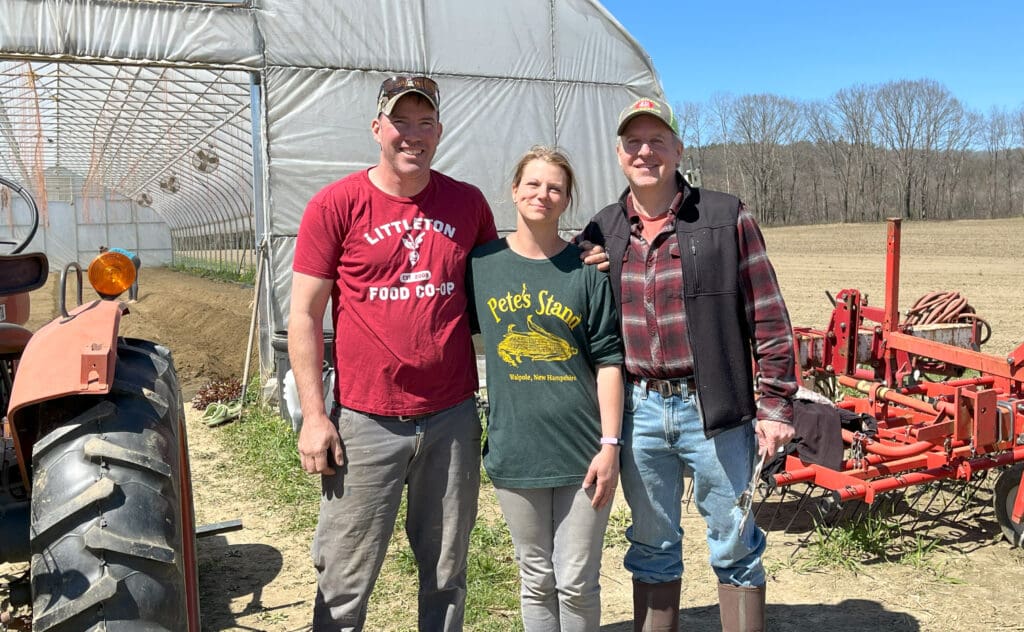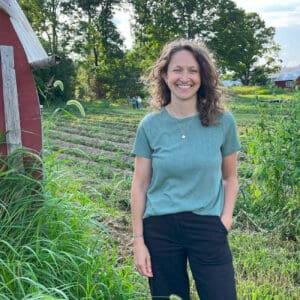With fall arriving, it’s the perfect time to gather the tools that will support you during your winter planning season. If you’re thinking about leasing farmland, finally getting a written lease for a verbal agreement you already have, or making your land available to lease to a farmer, consider these many benefits – and resources – to help you craft a new lease agreement or improve your existing lease.
Leasing Benefits
Leasing farmland is a common way to access land. Nearly half of all US farmers lease either some or all of the land that they farm because leasing allows farmers to get onto farmland without the enormous capital investment required to purchase land.
When it comes to leasing, there are different types of leases to consider: short-term, long-term, and even lease-to-own. A short-term lease can enable you to experiment with new practices, try a new location, test whether your farm plans are financially feasible, and whether you are comfortable with your landowner (and vice versa). This flexibility can be particularly useful when you’re just getting started, or when a landowner wants to get to know you and your operation before committing to a longer lease. However, with a short-term lease it can be harder to make long-term business or family plans. With an annual lease, for example, you don’t know for sure if you’ll be on that same land next year, so longer-term soil improvements, projects like permanent fencing, drilling a well, or putting up permanent structures, or planting of perennial crops can be a risky investment.

Longer-term leases can offer many of the same financial, practical, and emotional advantages of owning land, without some of the associated costs and responsibilities such as taxes, fees, depreciation, and insurance. They provide a longer planning horizon for your farming operation, giving you the time to hopefully see a return on your improvements in the land, when implementing sustainable farming measures, and capturing the benefits of soil building. A long-term lease can also be a significant commitment for the landowner, and takes careful negotiation of terms for default and termination.
If ownership is a goal of yours, leasing can be a pathway to ownership, with a willing and interested landowner. “Lease-to-own” refers to a few different strategies to gain ownership of a particular property at a future point via specific legal transactions involving the property owner (landlord) and the buyer (tenant), such as a right of first refusal or a purchase option. Lease-to-own provisions are advantageous for farmers who cannot arrange for a conventional mortgage but are pretty certain they want to own this particular property in the future. Landowners also benefit from lease agreements. For example, there are property tax advantages to having your land in agricultural use. Additionally, a farm tenant can share the burden of property maintenance and contribute desired improvements, especially if they have a lease that offers the security and an adequate planning horizon. Finally, as a landowner, not only are you offering an important opportunity to a farmer or farm family, but you are also benefiting the land itself — active farm management is often much better for the land than letting it sit idle or often leaving it to invasive weeds and scrub.
Resources to Support Your Lease
With those benefits in mind, take advantage of our free downloadable resources available to help you develop or improve your farmland lease.
- Elements of a Good Farm Lease – a list of important items to consider with a farm lease, and a great place to start when brainstorming a lease outline
- Leasing Fact Sheets – key terms and clauses, plus tips to develop a written lease plan, determine rent, and more
- Short-term Lease Template – helpful example of elements to include and language used in a short term farm lease
- Example Farm Lease with Option to Purchase – elements to include as well as language used in this lease scenario
- A Landowner’s Guide to Leasing Land for Farming – comprehensive overview for landowners
- Find more Leasing Farmland Resources
Need additional support? Our field agents provide one-on-one advising to help farmers and landowners craft, improve, or negotiate leases. Reach out using our Farm Seeker Form or our Landowner Form.
Once you’ve discussed lease elements with the other party and have made some decisions, use the Build-A-Lease Tool, to build a working version of a lease agreement that fits your situation.
Learn from other farmers’ farmland leasing experiences
- Beginning farmer finds farmland and secures a 10-year lease.
- Farm seeker secures a lease to own agreement.
- Hear from David at Natural Roots Farm, in our Impact Video, who also loves his lease!






